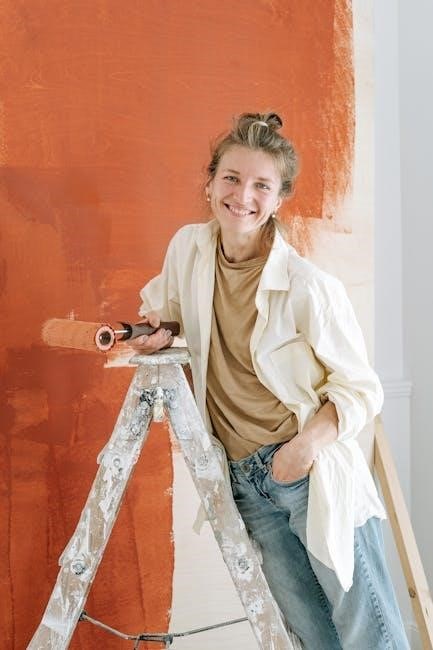The Marble Roller Coaster Project is an engaging STEM activity where students design and build roller coasters using foam pipe insulation and marbles‚ exploring physics principles like gravity and motion while fostering creativity and engineering skills.
1.1 Overview of the Project
The Marble Roller Coaster Project involves designing and constructing a track using materials like foam pipe insulation and marbles. Students create loops‚ hills‚ and curves to test how marbles navigate the course. The goal is to maximize the marble’s travel distance‚ exploring physics concepts such as energy conservation and motion. This hands-on activity encourages creativity‚ problem-solving‚ and an understanding of scientific principles while building a functional mini roller coaster.
1.2 Importance of Physics in Roller Coasters
Physics is the foundation of roller coaster dynamics‚ governing motion‚ energy transfer‚ and forces. Gravity drives the marble’s descent‚ converting potential energy into kinetic energy. Friction and Newton’s laws influence speed and acceleration. Understanding these principles helps optimize track designs‚ ensuring marbles navigate loops and curves efficiently. This project illustrates how fundamental physics concepts are essential for engineering and design in real-world applications‚ making it a practical learning tool for students.
1.3 Objectives of the Project
The primary objectives are to design and construct a functional marble roller coaster‚ demonstrating an understanding of physics principles. Students aim to maximize the marble’s travel distance and successfully navigate loops and curves. The project encourages creative problem-solving‚ teamwork‚ and precise craftsmanship. It also seeks to reinforce learning through hands-on experimentation‚ making complex concepts like energy conservation and motion accessible and engaging for participants of all skill levels.

Materials and Tools Required
Key materials include foam pipe insulation‚ marbles‚ masking tape‚ scissors‚ and cardboard. Tools needed are rulers‚ measuring tapes‚ and craft knives for precise cuts and assembly.
2.1 List of Materials (Foam Pipe Insulation‚ Marbles‚ etc.)
Key materials: foam pipe insulation for the track‚ marbles‚ masking tape‚ scissors‚ cardboard for the base‚ rulers‚ and measuring tapes. Optional tools include craft knives and sandpaper for smoothing surfaces. Additional items like glue sticks or weights can enhance stability. Ensure all materials are readily available to facilitate easy construction and experimentation.
2.2 Tools Needed (Scissors‚ Tape‚ etc.)
Essential tools include scissors for cutting foam insulation‚ masking tape for securing tracks‚ and rulers for measuring designs. Craft knives or utility knives are useful for precise cuts‚ while sandpaper smooths rough edges. Measuring tapes and calculators aid in precise track layouts. Optional tools like hot glue guns can reinforce connections‚ ensuring durability and stability during marble runs. These tools are fundamental for constructing a functional and efficient roller coaster.
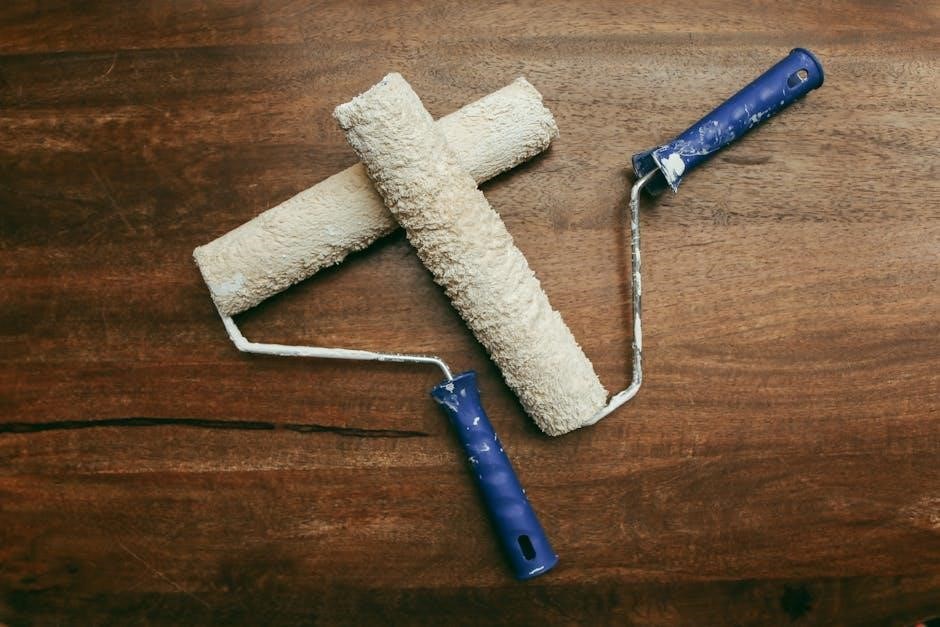
Design and Construction
Begin by sketching the track layout‚ considering loops‚ hills‚ and curves. Use foam pipe insulation to create track components‚ ensuring stability and smooth transitions. Assemble the coaster carefully‚ testing each section for marble flow and structural integrity to achieve optimal performance and durability.
3.1 Sketching the Track Layout
Sketching the track layout is the first step in designing your marble roller coaster. Plan the route‚ including loops‚ hills‚ and curves‚ ensuring a smooth flow for the marble. Consider the starting height‚ as it must be higher than the tallest feature‚ like loops‚ to maintain momentum. Use graph paper to create a detailed design‚ noting measurements and angles. This step helps visualize the coaster’s path and identify potential challenges before construction begins. A well-planned sketch ensures a functional and exciting marble roller coaster.
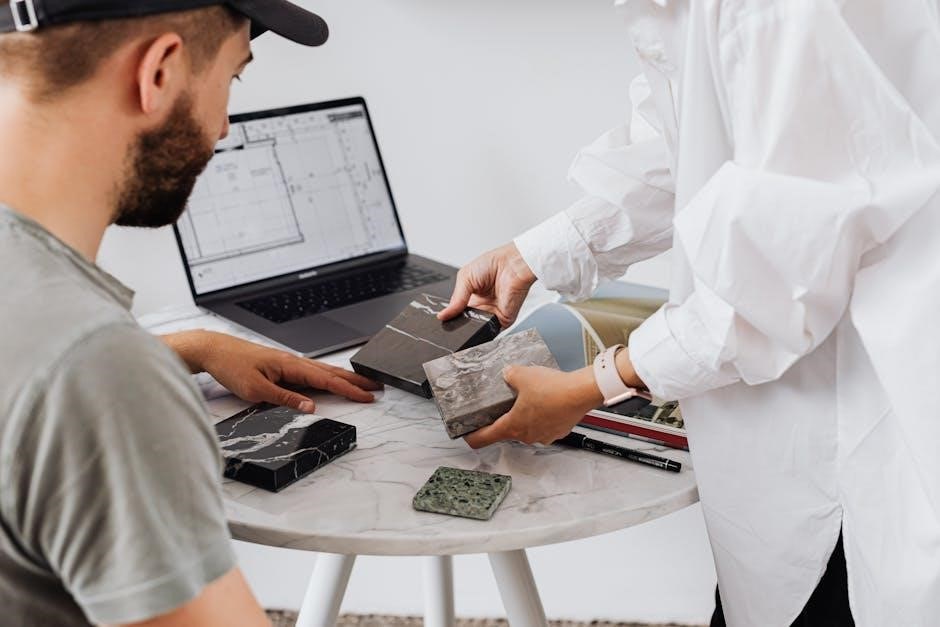
3.2 Building the Track Components (Loops‚ Hills‚ Curves)
Constructing loops‚ hills‚ and curves involves shaping foam pipe insulation into desired forms. For loops‚ ensure the marble has enough speed and the structure is sturdy. Hills should gradual to maintain momentum‚ while curves require smooth transitions. Secure components with tape‚ testing each section to ensure the marble moves smoothly. Adjustments may be needed to prevent derailments or energy loss‚ ensuring a seamless and thrilling path for the marble to follow.
3.3 Assembling the Roller Coaster
Assembling the roller coaster involves connecting loops‚ hills‚ and curves into a cohesive track. Use masking tape to secure joints‚ ensuring stability and smooth transitions. Test the marble’s movement through each section‚ making adjustments to prevent derailments or energy loss. Elevate the starting point to maximize the marble’s initial potential energy. Balance aesthetics and functionality‚ ensuring the structure is both visually appealing and functional. This step requires patience and precision to create a thrilling and efficient marble roller coaster experience.
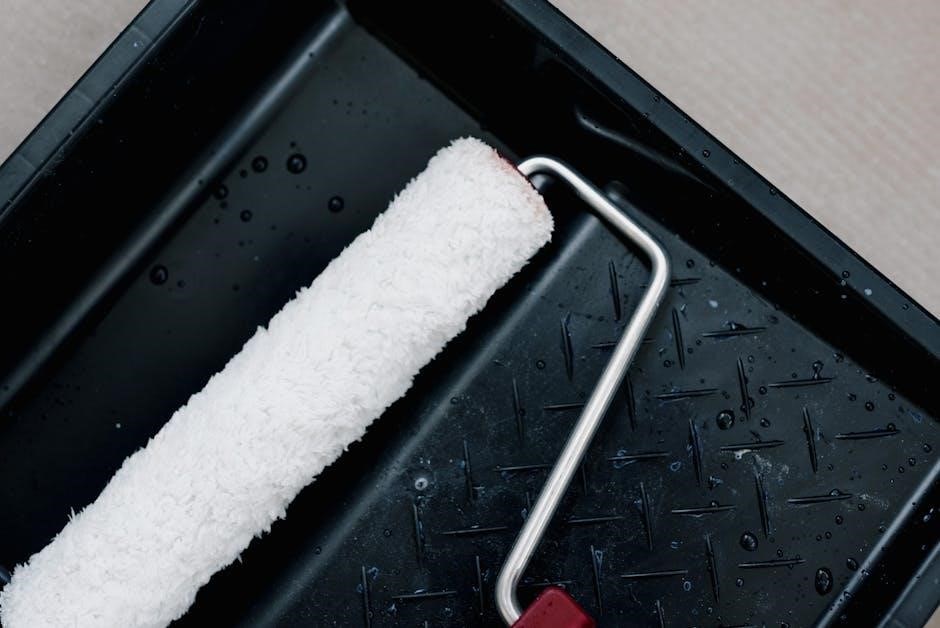
Physics Principles Involved
The marble roller coaster demonstrates energy conservation‚ where potential energy converts to kinetic energy‚ and the effects of gravity and friction influence the marble’s motion.
4.1 Newton’s Laws of Motion
In the marble roller coaster project‚ Newton’s Laws of Motion are fundamental. The First Law explains how the marble maintains motion until friction or gravity intervenes. The Second Law relates force‚ mass‚ and acceleration‚ influencing the marble’s speed during drops and loops. The Third Law highlights action-reaction forces‚ ensuring the marble adheres to the track during sharp turns. These principles are vividly demonstrated through the marble’s path and speed‚ making the project an interactive learning tool for understanding physics concepts.
4.2 Energy Conservation (Potential and Kinetic Energy)
The marble roller coaster project vividly demonstrates energy conservation. As the marble rolls down‚ potential energy converts to kinetic energy‚ driving its motion. Hills and loops showcase energy transformations‚ where kinetic energy is regained as potential. Friction and air resistance cause energy loss‚ affecting the marble’s speed and travel distance. This hands-on activity helps students visualize how energy transitions between forms and understand the efficiency of energy transfer in real-world systems‚ making complex physics concepts accessible and engaging.
4.3 Gravity and Friction
Gravity is essential for propelling the marble through the roller coaster‚ as it provides the downward force necessary for motion. Friction‚ however‚ acts as a counterforce‚ slowing the marble and reducing its travel distance. The interaction between these forces is crucial for understanding how roller coasters function. By designing loops and hills‚ students observe how gravity influences the marble’s path and speed. This project helps illustrate how frictional losses affect energy efficiency‚ encouraging students to optimize their designs for smoother motion and longer runs.
Testing and Analysis
Testing involves observing the marble’s path‚ measuring speed‚ and analyzing loop performance. Each trial provides insights into design effectiveness‚ helping identify areas for improvement to maximize the marble’s travel distance and stability.
5.1 Initial Drop and Marble Speed
The initial drop is critical for generating speed and energy. A higher starting point increases potential energy‚ converting it into kinetic energy as the marble descends. Testing involves measuring the marble’s speed and observing how it navigates loops and curves. A steeper drop generally results in higher velocity‚ enabling the marble to complete loops successfully. Accurate measurements and consistent testing help determine the optimal initial height for maximizing speed and ensuring smooth traversal of the track design.
5.2 Measuring the Marble’s Path and Distance
Measure the marble’s path and distance to analyze its movement. Use a ruler or meter stick to record the total distance traveled. Time the marble’s journey to calculate speed. Track its progress through loops‚ hills‚ and curves to assess design efficiency. Accurate measurements help evaluate energy transfer and motion principles. Consistent testing ensures reliable data‚ enabling improvements to the roller coaster’s design for optimal performance and marble traversal.
5.3 Analyzing Loops and Curves
Analyze loops and curves to understand their impact on the marble’s motion. Measure the height and radius of loops to ensure the marble maintains contact and completes the loop. For curves‚ observe how banking affects the marble’s trajectory and prevents derailment. Test different angles and shapes to optimize smooth transitions. This analysis helps refine the design‚ ensuring the marble navigates efficiently while adhering to physics principles like centripetal force and energy conservation.
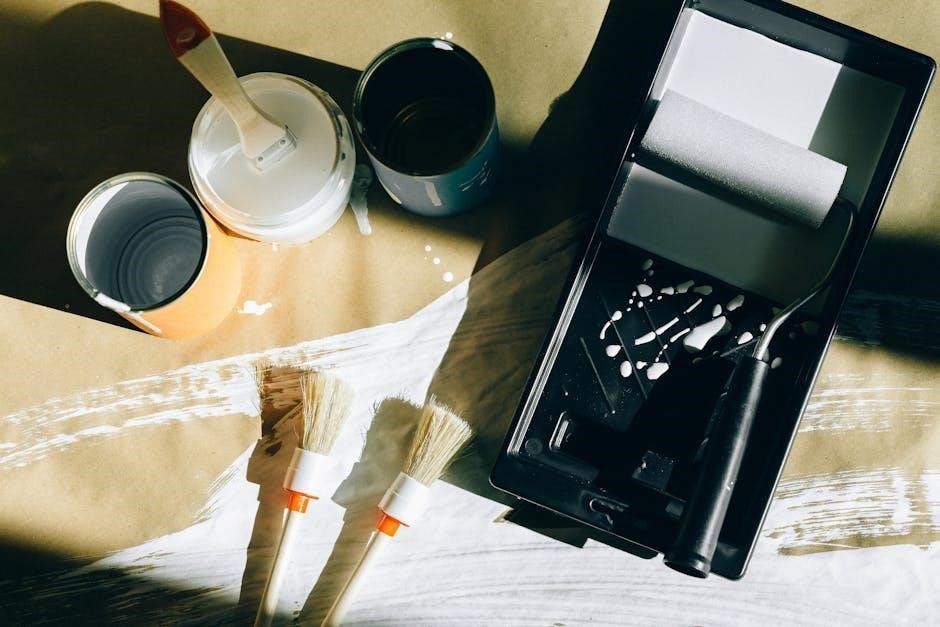
Tips for Success
Ensure track stability by using ample tape‚ start with simple designs‚ and test with multiple marbles to identify and fix issues early in the construction process.

6.1 Ensuring Proper Track Stability
Track stability is crucial for a functioning marble roller coaster. Use foam pipe insulation as the primary material‚ securing connections with masking tape. Test sections by gently shaking them to ensure durability. Avoid loose joints by applying even pressure while taping. For taller structures‚ reinforce bases with additional tape or weights. Regularly inspect the track for alignment issues and adjust as needed. These steps ensure a smooth and reliable marble path‚ minimizing disruptions during tests.
6.2 Maximizing the Marble’s Travel Distance
To maximize the marble’s travel distance‚ ensure the track starts with a sufficient initial drop and maintains a steady flow of energy. Optimize loops and curves to preserve momentum‚ avoiding sharp turns that cause energy loss. Use smooth transitions between track segments and minimize friction by ensuring the surface is even. Test and adjust the track layout iteratively‚ focusing on reducing obstacles and prolonging the marble’s path. This approach enhances efficiency and ensures the marble travels farther‚ demonstrating effective energy conservation principles.
6.3 Troubleshooting Common Issues
Common issues with marble roller coasters include marbles stopping mid-track‚ derailing‚ or failing to complete loops. To address these‚ ensure the initial drop is sufficient to maintain momentum and loops are tall enough for the marble to navigate. Check for track misalignments and tighten connections. Smooth transitions between track segments and proper support for curves and hills can prevent derailments. Testing each section iteratively helps identify and fix issues early‚ ensuring a smoother and more efficient marble path. Regular adjustments optimize performance and reliability.
Educational Value
The Marble Roller Coaster Project reinforces physics concepts‚ develops engineering skills‚ and encourages creative problem-solving‚ making it an engaging and educational STEM activity for students.
7.1 Reinforcing Physics Concepts
The Marble Roller Coaster Project actively engages students in understanding fundamental physics principles‚ such as Newton’s Laws of Motion‚ gravity‚ and energy conservation. By designing tracks with loops‚ hills‚ and curves‚ students observe how kinetic and potential energy transform. They also explore friction’s role in slowing the marble and the importance of initial drop height for sufficient speed. Hands-on experimentation makes abstract concepts tangible‚ fostering a deeper grasp of physics in a fun‚ interactive way.

7.2 Developing Engineering Skills
The Marble Roller Coaster Project challenges students to design and construct a functional track‚ fostering essential engineering skills. By experimenting with materials like foam pipe insulation and tape‚ students learn problem-solving‚ critical thinking‚ and iterative design. Building loops‚ hills‚ and curves requires precision and creativity‚ while testing and refining the track teaches perseverance and adaptability. This hands-on approach helps students understand the practical application of engineering principles in real-world scenarios‚ preparing them for future STEM challenges.
7.3 Encouraging Creative Thinking
The Marble Roller Coaster Project sparks creativity by allowing students to design unique tracks with loops‚ curves‚ and hills. Encouraging experimentation with different materials and layouts‚ the project fosters innovative problem-solving. As students explore various designs‚ they develop a deeper understanding of how physics principles influence their creations. This freedom to imagine and build inspires out-of-the-box thinking‚ transforming a simple marble into a vehicle for artistic and scientific expression.
Safety Considerations
Ensure a safe workspace by clearing the area of tripping hazards. Handle sharp tools like scissors with care‚ and secure the roller coaster structure to prevent it from tipping over.
8.1 Handling Sharp Objects
Always handle sharp objects like scissors and craft knives with extreme care. Ensure adult supervision is present when students are using these tools. Keep fingers away from blades and store sharp objects safely when not in use. Avoid distractions while cutting materials to prevent accidents. Encourage students to report any injuries immediately and maintain a first-aid kit nearby. Proper handling reduces risks and ensures a safe working environment for everyone involved in the project.
8.2 Ensuring a Safe Workspace
Create a safe workspace by clearing a flat‚ stable surface for building. Ensure good lighting and keep the area tidy to prevent tripping hazards. Supervise students to avoid accidental injuries and ensure proper use of materials. Use protective covers or tablecloths to prevent damage and make cleanup easier. Encourage teamwork and careful planning to maintain a safe and organized environment throughout the project. A well-prepared workspace promotes focus and safety for everyone involved.
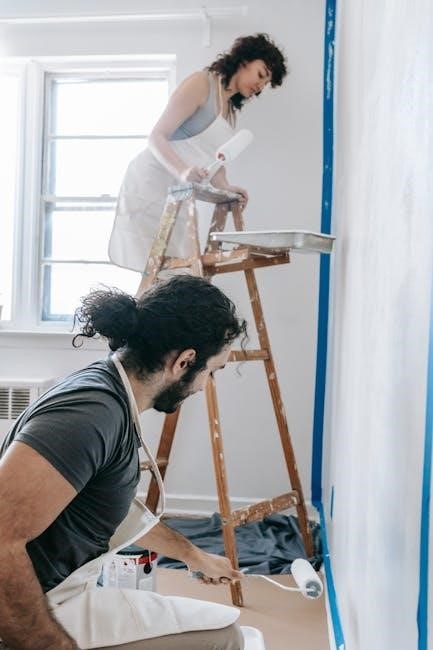
Variations and Extensions
Ensure a safe workspace by clearing a stable‚ flat surface for construction. Secure loose items‚ use protective covers‚ and maintain good lighting. Supervise students‚ especially when handling sharp tools like scissors or hot glue guns. Encourage proper tool usage and store materials neatly to avoid tripping hazards. Regularly clean up debris and ensure the area is well-ventilated. A safe environment fosters focus‚ creativity‚ and accident-free building‚ making the project enjoyable for everyone involved.
9.1 Adding Multiple Loops
Adding multiple loops challenges students to optimize track design for continuous motion. Each loop requires sufficient initial drop height to maintain momentum. Ensure smooth transitions between loops to prevent marble loss. Experiment with loop sizes and spacing to observe effects on speed and stability. This variation enhances understanding of energy conservation and gravitational forces‚ encouraging innovative problem-solving and creativity in roller coaster design while adhering to physical principles.
9.2 Incorporating Different Materials
Incorporating different materials adds creativity and complexity to your marble roller coaster. Experiment with cardstock‚ foam board‚ or cardboard for the base and track supports. These materials offer varying levels of durability and flexibility. Use hot glue for stronger bonds or masking tape for easier adjustments. Adding textures like sandpaper can reduce friction‚ while smoother surfaces enhance speed. This variation allows students to explore how material properties influence the marble’s motion and overall coaster performance‚ fostering experimentation and innovation.
9.3 Creating a Theme or Design
Creating a theme or design adds an artistic dimension to your marble roller coaster. Personalize your coaster with vibrant colors‚ patterns‚ or mini props‚ transforming it into a unique attraction. Themes like space adventures or jungle journeys can inspire creativity. Decorate the base with paint or stickers for a polished look. This step encourages creative thinking beyond engineering‚ allowing students to express their personality while building a functional and visually appealing roller coaster‚ making the project even more engaging and fun.
Real-World Applications
The marble roller coaster project mirrors real-world engineering challenges‚ promoting problem-solving and understanding of physics principles applicable to roller coaster design and amusement park mechanics.
10.1 Roller Coaster Engineering
Roller coaster engineering involves designing thrilling yet safe rides‚ applying physics principles like energy conservation and motion dynamics. The marble roller coaster project simulates these challenges‚ teaching students to balance excitement with structural integrity. By experimenting with loops‚ hills‚ and curves‚ participants gain insights into how real roller coasters optimize speed and safety. This hands-on approach fosters problem-solving skills and an understanding of the engineering behind amusement park attractions‚ using simple materials like foam and marbles to model complex systems.
10.2 Amusement Park Physics
Amusement park physics relies heavily on energy conservation‚ Newton’s laws‚ and gravity to create thrilling rides. Roller coasters convert potential energy into kinetic energy‚ maintaining motion through carefully designed tracks. Friction and motion dynamics ensure safety and excitement. The marble roller coaster project mirrors these principles‚ allowing students to explore how real-world roller coasters balance speed‚ loops‚ and safety. This hands-on learning experience highlights the physics behind the fun‚ making complex concepts accessible and engaging for learners of all ages.
The Marble Roller Coaster Project offers a fun‚ educational experience‚ teaching physics principles like energy conservation and motion while fostering creativity and critical thinking in a hands-on way.
11.1 Summary of Key Takeaways
The Marble Roller Coaster Project effectively demonstrates fundamental physics principles such as Newton’s laws‚ energy conservation‚ and gravity. Participants learn how track design influences marble motion‚ with loops‚ hills‚ and curves requiring precise balance to maintain momentum. The project also highlights the importance of friction and initial drop in determining the marble’s travel distance and speed. By combining creativity with problem-solving‚ students gain hands-on engineering experience‚ reinforcing theoretical concepts through practical application and iterative testing.

11.2 Future Projects and Opportunities
Future projects could involve incorporating automation or sensors to measure speed and distance in real-time. Students can explore advanced designs‚ such as spiral lifts or magnetic levitation‚ to enhance the coaster’s functionality. Collaborative efforts with computer science classes could introduce coding elements‚ like programming the marble’s path. Additionally‚ integrating environmental themes or artistic designs could expand the project’s scope‚ fostering interdisciplinary learning and innovation while maintaining its core focus on physics and engineering principles.
